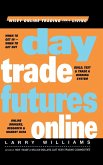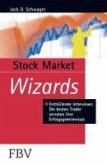Indicators You Can Use to Measure Today's Markets Accurately--And See Market Swings Before They Occur From newspapers and magazines to financial networks and the Internet, investors are continually bombarded with economic data. Yet only seven of today's economic indicators--and not necessarily those you hear on the evening news!--can be relied on to forecast market movements accurately. Seven Indicators That Move Markets reveals these important leading indicators and explains how they can be used to dramatically improve the timing of your buy and sell decisions. This straight-talking book sets aside complex jargon and calculations to help you make what you read and hear work for you consistently. Let it show you how to: * Understand the direct relationship between market indicators and investment performance * Interpret market numbers and use them to fine-tune your investment program * Profit from favorable market conditions and avoid the unfavorable Seven Indicators That Move Markets won't give you a cookie-cutter, one-size-fits-all formula for earning instant profits in today's market. What it will give you is the foundation you need to become a smarter investor, one who bases investment decisions on knowledge and intelligence--instead of blind luck and chance. Fed funds futures ... Yield curves ... Credit spreads ... Volatility ... Option price derivatives ... Futures price relationships ... Industrial commodity prices ... These seven indicators, for the most part ignored or paid minimal attention by financial pundits and the national press, have proven to be remarkably accurate at alerting investors to the direction and strength of pending market movements. Seven Indicators That Move Markets is the first book to examine how they function individually and with each other. It explains in terms that individual investors can understand what these indicators are, how to interpret and analyze them, and how to use the resulting data to instantly improve both upside potential and downside protection. A collaboration between one of the nation's leading economists and a journalist who has chronicled the markets for well over a decade, this layman's guide clarifies and simplifies the relationships between indicators and market performance, including: * How to read a yield curve, both in its entirety and in its segments * Methods for using volatility to gauge how long an ongoing market run will last * How the relationship between fed funds futures and various yield curves may reveal more than traditional indicators * What industrial commodity price indexes can--and can't--alert you to * How to separate true changes in market fundamentals from fear-driven "crises" Finally, Kasriel and Schap's book shows you how to combine the seven indicators to construct a framework for accurately predicting and interpreting market events. In conjunction with your existing methods and strategies, this framework will give you a stronger handle on the current market environment, and help you to plot your best moves in that market. No indicator is infallible. However, certain indicators have proven time and again to predict market movements with accuracy and precision. Let Seven Indicators That Move Markets introduce you to these indicators and show you how to use them to structure your investment moves.
Hinweis: Dieser Artikel kann nur an eine deutsche Lieferadresse ausgeliefert werden.
Hinweis: Dieser Artikel kann nur an eine deutsche Lieferadresse ausgeliefert werden.








